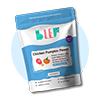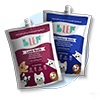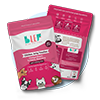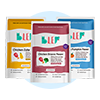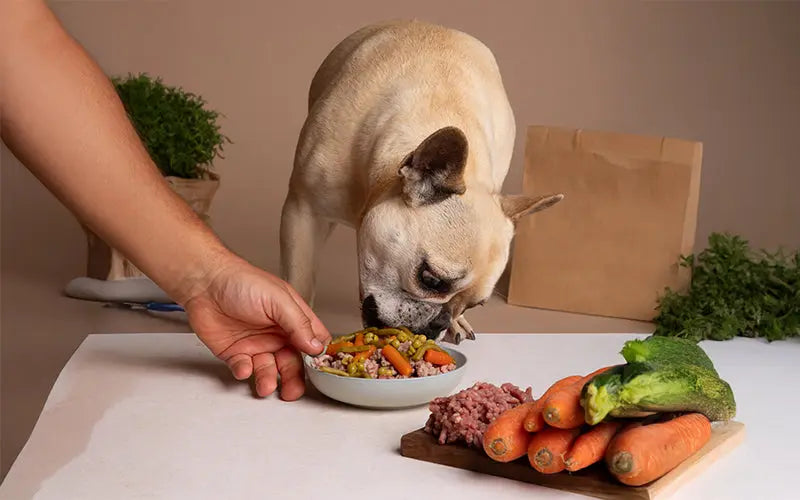Have you ever got confused thinking, if your puppy could just eat what your older dog eats, or vice versa? It might seem easier to have just one kind of food at home for all your pets. But when it comes to nutrition, convenience doesn’t always equal what's best for their health.
A growing puppy and a fully grown adult dog are in completely different life stages, with different physiological needs, and their bodies need different kinds of nutritional support. Using a one-size-fits-all diet might save time or money in the short term, but it can cost your dog years in terms of health, development, energy levels, and quality of life. In this article, we’ll explore how tailoring your pet’s diet to their life stage is necessary to ensure they get the nutrients they need and how you can ensure a healthy diet for them when they need it the most.
Why Puppy and Adult Dog Nutrition Needs Are So Different

Puppies (below 6 months) are in a phase of rapid development, like toddlers. They’re growing bones, building muscles, and developing vital organs and immune systems. To support this intense growth, they need a diet rich in calories, protein, fat, vitamins, and minerals. Every bite needs to deliver the building blocks for healthy development.
On the other hand, adult dogs (6 months to 7 years) are already fully developed. Their bodies are focused on maintenance, not growth. What they need is a balanced diet that supports energy levels, keeps their weight in check, and ensures long-term organ health.
When you feed a puppy adult dog food or give an adult dog puppy formula, it can lead to serious problems like
-
Stunted Growth in puppies due to insufficient nutrients
-
Obesity in adults when fed calorie-dense puppy food.
-
Digestive distress from mismatched formulas.
-
Nutrient imbalances affecting bone health, metabolism, and immunity.
The Unique Nutritional Demands of Puppies
Puppies grow fast, really fast. In just the first year, they develop muscles, bones, organs, and immune systems from scratch. Naturally, this means their diet must be rich in specific nutrients to support all that growth. Here’s what a puppy dog diet must include:
1. Higher Protein Intake
Protein is essential for muscle development, organ growth, and overall body function. The AAFCO (Association of American Feed Control Officials) recommends at least 22% protein for growing puppies, significantly more than adult dogs need.
2. More Fat for Energy and Brain Development
Fat provides a dense source of energy for active puppies. It also helps in brain and vision development by supplying omega fatty acids and supports the absorption of vitamins A, D, E, and K.
3. Controlled Calcium and Phosphorus
Too much or too little calcium can result in bone deformities, especially in large breeds. Puppy food should have a balanced calcium-phosphorus ratio tailored to breed size to avoid problems like hip dysplasia.
4. Smaller, Frequent Meals
Due to their high metabolism and smaller stomachs, puppies need 3–4 meals a day in the early months. You can then taper down to twice a day as they approach adulthood.
5. Micronutrient Balance
Puppies also need precise amounts of vitamins A, B-complex, and D and minerals like zinc, magnesium, and potassium. These nutrients support immunity, nerve function, and metabolism.
What Adult Dogs Really Need
Once your dog has matured, their nutritional needs change dramatically. They need fewer calories and nutrients but still require balance for optimal health.
1. Moderate Protein
Adult dogs require at least 18% protein, mainly to maintain muscle mass and organ health. Extra protein is unnecessary and can strain kidneys in dogs with existing health issues.
2. Controlled Caloric Intake
Obesity is one of the top preventable health issues in adult dogs. Adult food contains fewer calories to avoid unnecessary weight gain, especially in less active dogs.
3. Stable Fat and Calcium Levels
Too much fat can lead to obesity, and excessive calcium in adult dogs can cause health issues. That’s why maintenance diets are specially formulated with just the right levels.
4. Consistent Feeding Routine
Adult dogs (6 months to 7 years) do well with two meals per day, which helps regulate blood sugar, prevents overeating, and supports healthy digestion. For senior dogs aged 7 years or more, even 1-2 small meals/day will suffice.
Common Feeding Mistakes Dog Owners Make

Many dog owners, though well-intentioned, often make feeding mistakes simply due to a lack of awareness about the differing nutritional needs of puppies and adult dogs.
1. Feeding Puppies Adult Dog Food
Adult food lacks the higher protein, fat, and calcium puppies need. Feeding it too early can stunt growth and weaken development.
2. Choosing Low-Quality Food
Generic, low-cost dog food often lacks the high-quality animal proteins like chicken, lamb, salmon, or turkey necessary for muscle development and overall growth of puppies. It also falls short on key vitamins and minerals essential for both puppies and adults.
3. Trusting Go-To Labels or Go by Price
Dog owners often rely on popular labels or choose based on affordability, assuming all products are similar. It’s important to check if a diet is AAFCO-approved and tailored to your dog’s specific life stage. For eg, BLEP offers vet-approved, breed-specific diets made with natural ingredients and life-stage-specific formulations that support both development and health maintenance. Check out our formulated options here.
4. Overfeeding or Underfeeding
Feeding the right food isn’t enough. Portion control also matters. Overfeeding leads to obesity; underfeeding causes malnourishment. Always use a measuring cup and follow feeding guidelines based on breed, age, and activity level.
5. Sudden Food Changes
Dogs (especially puppies) have sensitive digestive systems. Switching foods abruptly can lead to vomiting, diarrhea, or refusal to eat. Always transition over 7-10 days to let their stomach adjust.
6. Feeding Human Food and Table Scraps
Out of affection or habit, many dog owners share their food items, like chocolate, onions, grapes, caffeine, etc. with their pet. But these are toxic for dogs. Even foods that aren’t harmful can disrupt balanced nutrition or encourage begging.
7. Giving Bones to Puppies
While it may seem natural to give bones to teething puppies, it’s actually dangerous. Bones, especially cooked ones, can splinter and cause choking, internal injuries, or blockages. Opt for safe chew toys or vet-approved dental treats.
8. Irregular Feeding Times
Dogs, particularly puppies, thrive on routine. They need routine to develop healthy eating habits. Irregular feeding can cause digestive distress and behavioral issues.
9. Neglecting Hydration
Puppies are prone to dehydration due to higher metabolic rates. Always keep fresh water around them, and give moist food, especially during hot weather.
10. Not Consulting a Veterinarian
Every dog is different. A vet can help you understand specific nutritional needs based on your dog’s age, breed, health status, and lifestyle, ensuring a diet that truly supports their well-being.
How to Choose the Right Diet for Your Dog’s Life Stage

Getting your dog’s diet right might look complicated, but it only requires attention to detail. Here’s what to look for:
1. Look for life stage labeling
Choose “puppy,” “growth,” or “all life stages” for young dogs. For adults, choose foods marked “maintenance.”
2. Check the ingredients
Look for real meat, quality fat sources, and named vitamins and minerals.
3. Feed based on weight and breed
Small breeds may need higher-energy food, while large breeds require carefully balanced calcium and calories.
4. Use appropriate feeding frequency
Puppies need more frequent meals; adults usually need just two.
5. Transition foods gradually
When your pup turns one (or at your vet’s recommendation), move them to adult food over 7–10 days.
Give Your Dog the Right Start, and Keep It Going
Every stage of your dog’s life comes with unique nutritional needs, and it’s up to us as pet parents to meet them. Whether you're raising a wobbly little pup or caring for a calm adult dog, understanding their specific nutritional requirements is one of the most impactful ways to support their health.
Avoid the trap of convenience-based feeding. Instead, explore specialized diets like that from BLEP, where every product is tailored to your dog’s age, breed, and lifestyle. This will help your dog grow stronger, stay healthier, and live longer. BLEP’s all-life-stages recipe is crafted so every scoop delivers the right balance of protein, fat, vitamins, and minerals, making life simpler for you and healthier for your best friend.
Looking to explore more healthy treats and care tips for your furry friend? Check out our other guides like Can Dogs Eat Apples?, Can Dogs Eat Blueberries?, Dog Food for Weight Loss, Raw v/s cooked meat for dogs, Home Remedies to cure tick fever, Natural Dog Food, How many times should I feed my dog?, Things you should do to keep your pet healthy, Types of Dog Food, Can Dogs Eat Mango, Can Dogs Eat Strawberries, Why Do Dogs Licks You?, How Many Times to Feed a Dog?, How to find Good Dog Food in India?, Dog gut Health, and How Prebiotics and Probiotics can improves your dogs digestion. Each guide is designed to help you make better food choices for your dog because a happy dog starts with the right diet.

